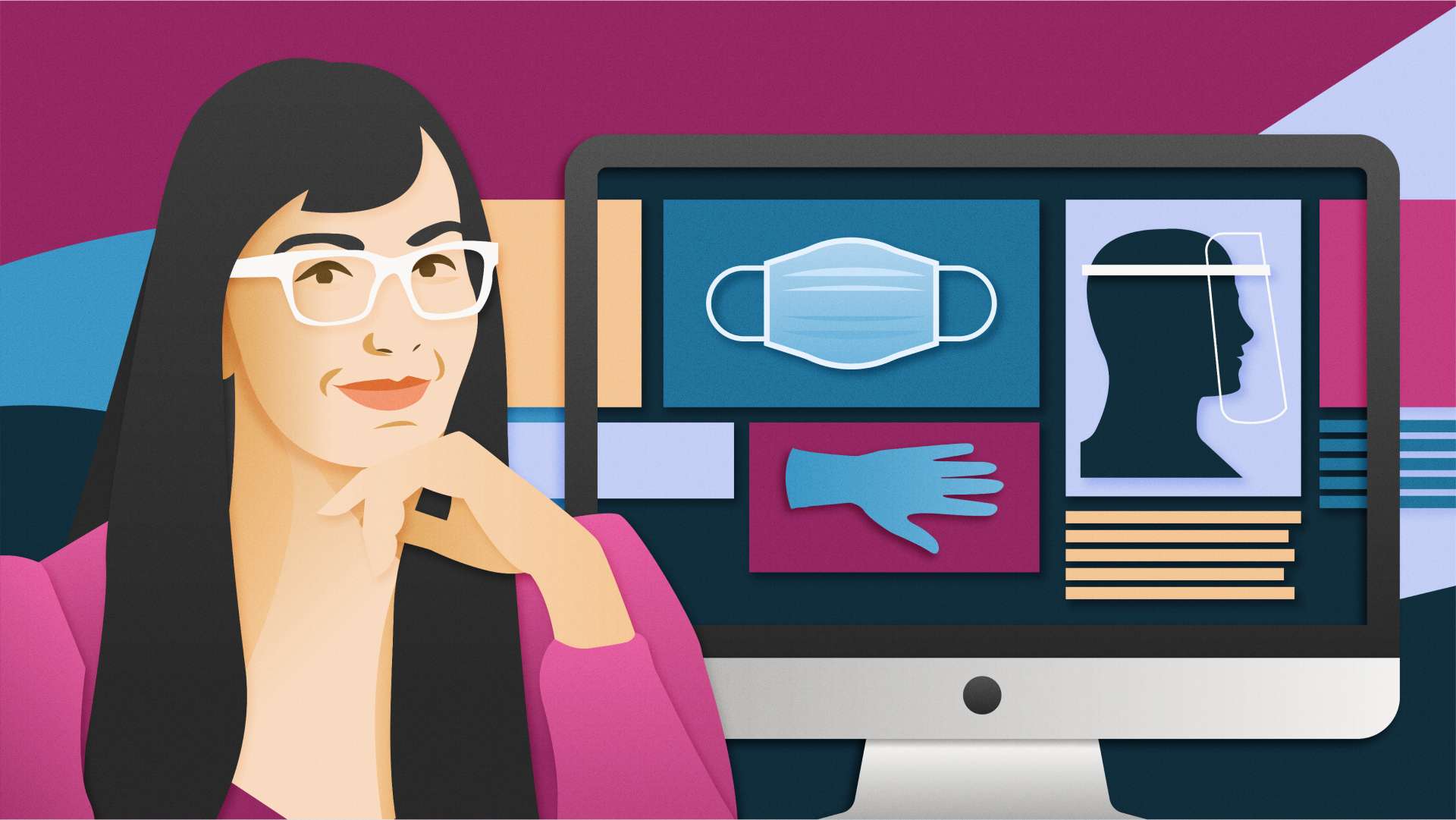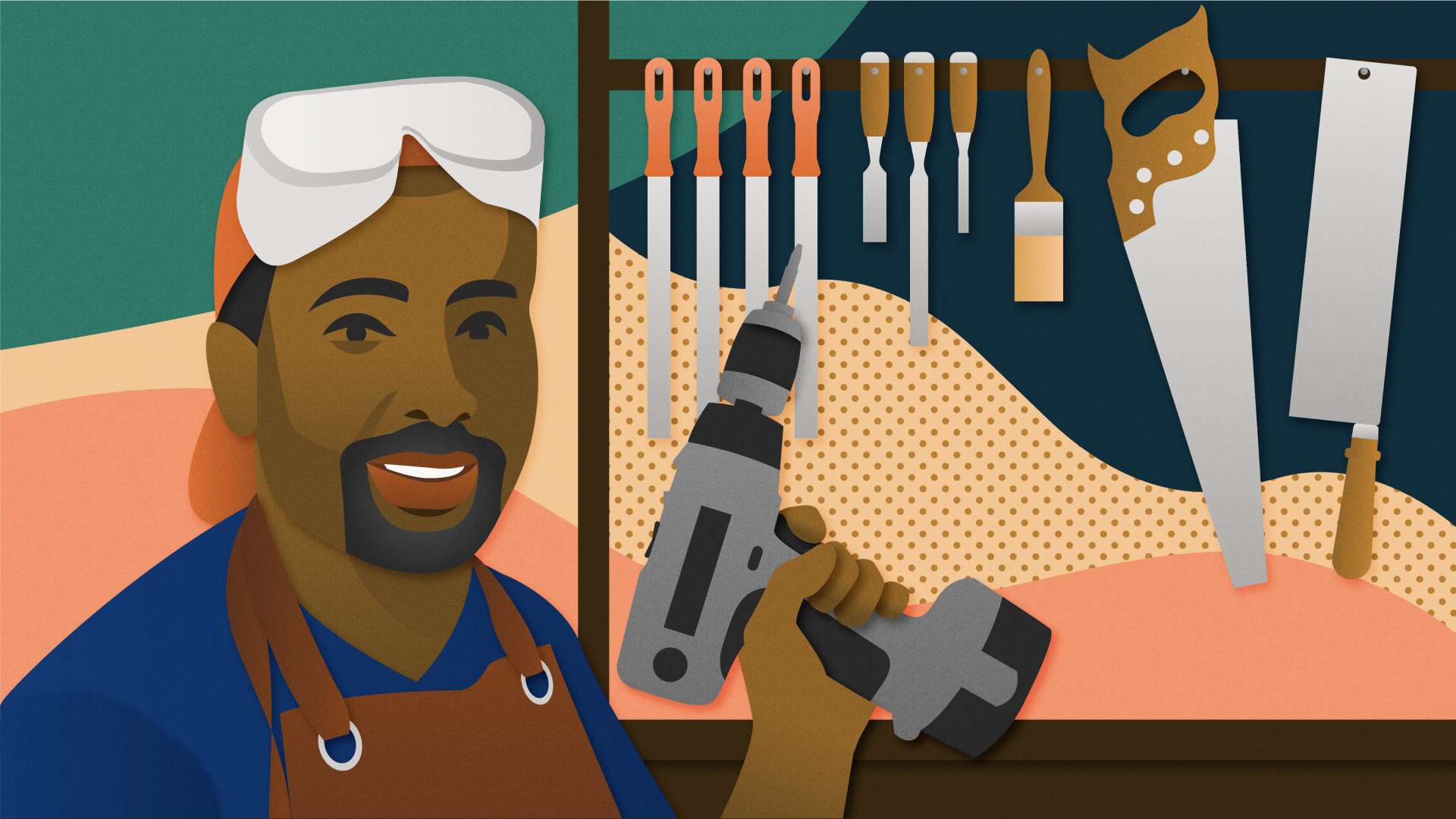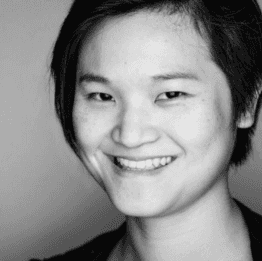When the severity of the coronavirus pandemic became clear in the US in early March, Drü Barrios felt like a lot of us. First, staying home was crucial to containing the virus. Second, not being able to do anything was driving him nuts. A Southern California-based product designer with a UX background, Barrios is best known for his creative side project: building reconstructed Nikes by hand on factory-issued soles under the name airthirtytwo. So, as images of masked essential workers and virus containment centers took over the news, Barrios decided to help in his own way. He went to work on a new shoe design called Stay Home that he hoped could raise money for COVID-19 relief.
Barrios never sells the shoes he makes. He doesn’t take commissions or price his work, and he turns down requests from his thousands of followers daily. But for his pandemic project, he decided to auction and raffle off four pairs of Nike SB Dunks to support relief funds run by GiveDirectly and United Way. The Stay Homes hit Instagram in July. In the sneakerhead corner of the internet, Barrios’s glow-in-the-dark coronavirus shoes went viral, eventually raising more than $40,000. (In another measure of shoe nerd popularity, the Stay Homes also spawned factory knockoffs within months.)
In early November, Barrios followed up with an election-themed design he named Our Voice. This time, anyone who hashtagged an “I voted” post could enter a raffle for the pair.

I’ll admit from the outset that I knew almost nothing about the world of custom shoe-building, so when I saw your stuff, I started to go down an Instagram rabbit hole.
It’s a really new scene! Even if you wanted to go down a really deep rabbit hole, you probably couldn’t go very far because we’re in the process of building the rabbit hole right now.
What do you call what you do?
Short version, we use the term “reconstruction.” We take a shoe from the factory, a retail shoe, then take the sole off of it and build a completely new shoe from the ground up.
How did you find your way into this world?
My day job is boring business-to-business software UI that, you know, pays well. Which is probably why the whole shoe thing happened. Most of the best designers I know have side projects that they care about. And for me specifically, it’s one that doesn’t have a profit motive. It’s not about me making money.
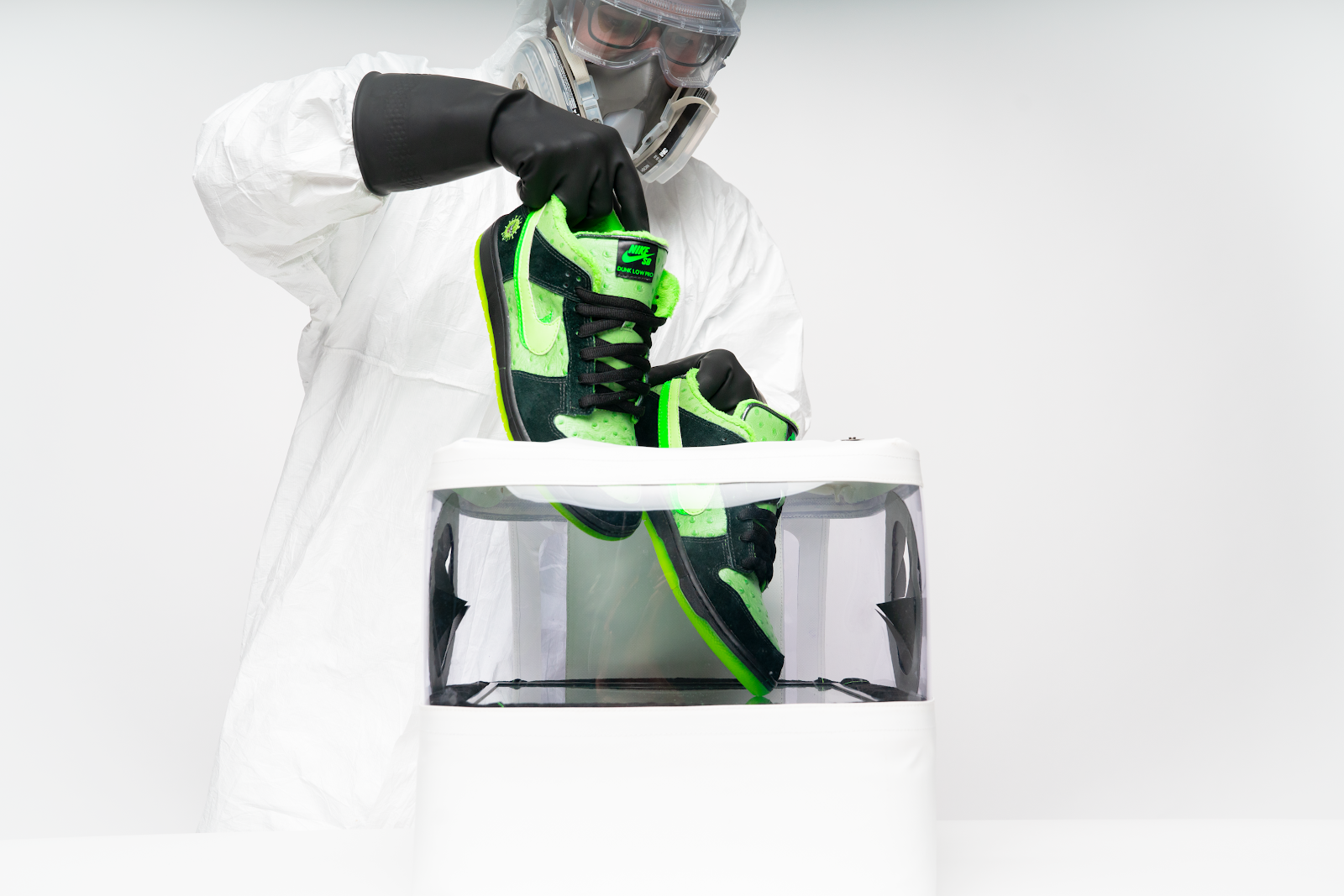
But does designing shoes relate at all to your product design work?
It’s almost like this is my anti that. In my normal work, all of us as designers, we’re trying to put aside our own biases, the things that we like, and make sure we’re looking through the lens of the user. Making sure that the person that’s getting their hands on the product is the one that you’re evangelizing. With shoes, I am the end user, so the only thing I need to do is make something I think is super awesome. And I wonder sometimes, is that the difference between design and art?
That in art you’re only serving yourself?
Well, maybe not that, but that I’m just making what I think this thing should be. I’m not taking into consideration the viewer, the beholder. For example, my last pair of shoes did half as well as the ones before them, but they were one of my favorite pairs. They’re one of the coolest things I’ve ever done, I’m super stoked on ‘em.
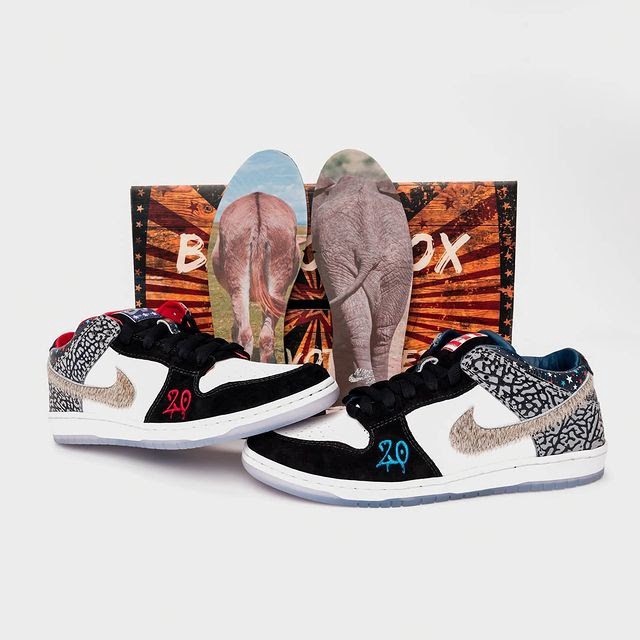
Those were the Our Choice shoes, right? What were some of the special features of those shoes?
I played on the ideas of the elephant and the donkey, red and blue, left and right. The insoles were the donkey and the elephant. The swooshes I did were hair-on-hide for the donkey, and then Nike has this faux elephant print fabric that’s iconic. You might not know about it if you don’t know much about sneakers, but the Jordan 3 Black Cement is one of the most iconic shoes of all time. And it has this elephant print that is probably the most iconic sneaker material there is, and I had some of that stuff, so I wanted to use it.
Have you cared about shoes your whole life?
Yes. The sneaker thing is pretty deep. I grew up without a lot of money and around scenes where your sneakers were a sign of how well you were doing. Eventually, as I grew up and became more successful and had more money, the Jordans that I used to be jealous of were the ones that I was buying. After a while, buying them kind of lost its steam. When you’re coming from being that kid who couldn’t afford them and the values you gain being in that situation, then the frivolity of spending tons of money on random shoes can make you have a little bit of an existential crisis later on. That’s part of why I felt compelled in some way to take that hype, the ridiculousness of that, and apply it to do something good.
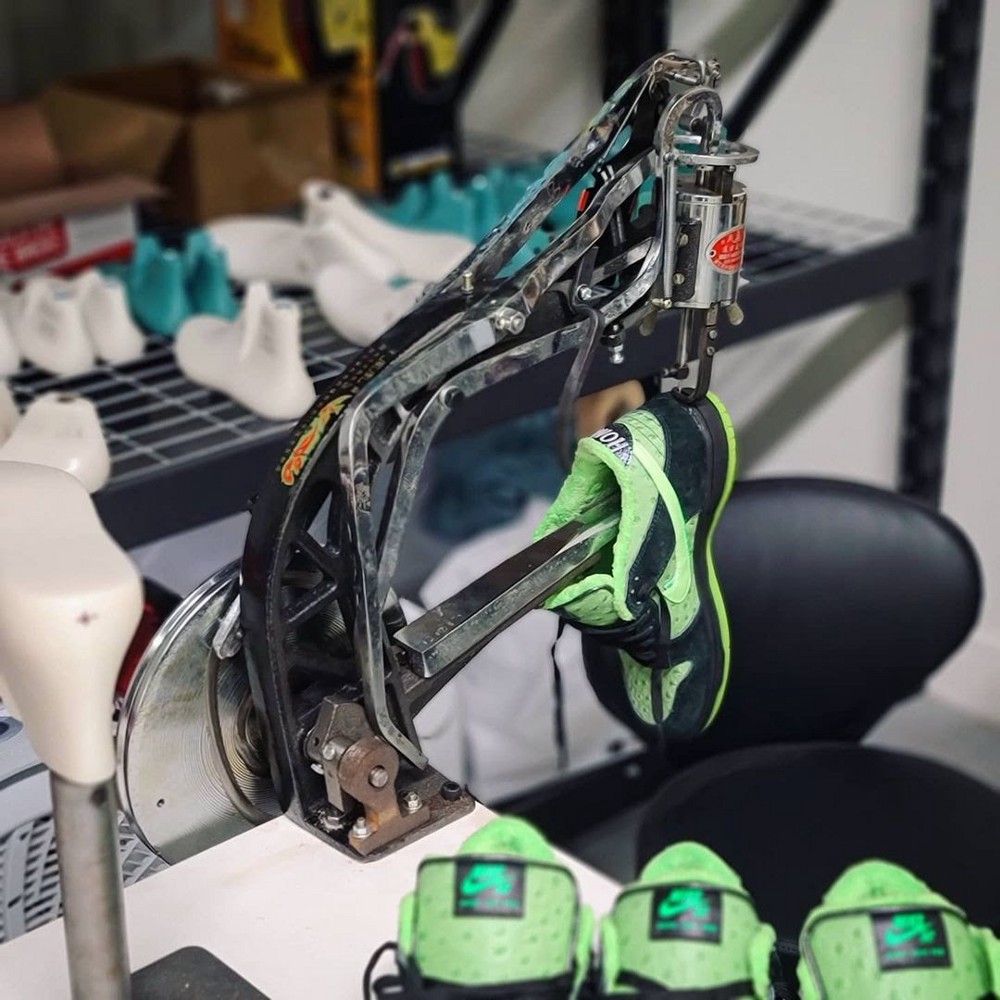
I’m curious about the nuts and bolts of all of it: what equipment you use, what your setup is. How long did it take to put that together?
Before I started, the information was really hard to get. There were only a handful of guys out there doing it, and they were very gatekeepy about the information because some of them make a lot of money selling these shoes. The barrier was the information. I learned a lot of it by watching YouTube videos of old guys making dress shoes in Europe and things like that, and applying that to what we do with sneakers. Eventually I took a class as well.
Where did you find a class on building Nikes?
There’s a guy called the Shoe Surgeon, who’s like the Tony Hawk of this stuff. I went to his class, spent 4 days, and made a shoe. And I left there having met a bunch of cool people who were also interested in doing what I wanted to do. I think the class gave me a 20 percent understanding of what I needed to know to make shoes. And then we — me and a few other guys that were in that class — banded together to learn the rest of the stuff that we needed to do. Which we’re still doing now. I started a Discord server for exactly that, and man, that was 6 months ago and I think we’re at 350 people now that are in there learning how to make shoes.
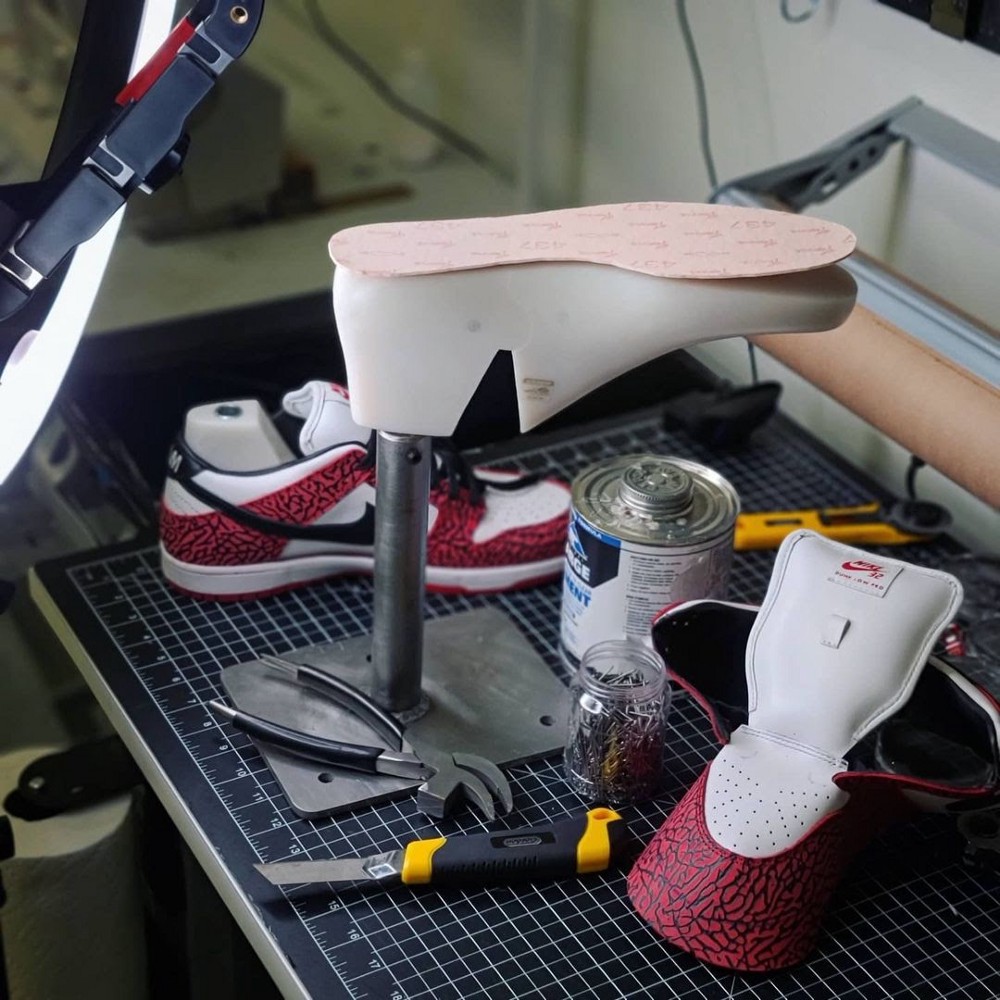
So now that you’ve set up your workshop, do you have 3D printers? What’s some of the stuff you use?
I do. I have a 3D printer right here next to me, but I don’t use it often. I use a couple different types of sewing machines. And then I have a skiving machine, which is a very technical machine that cuts leather in a specific way that you need for seams. Some presses. This shop is more or less a very small-scale shoe factory. But you don’t need all that sort of stuff. I know guys that literally hand stitch every piece and don’t have a machine at all. I have thousands of dollars of machines and industrial stuff that makes it easier on me, but there’s really no excuse, you can do it with anything. And that probably applies to basically anything else. You wanna be the best illustrator you can be, but you can’t afford ProCreate? Go doodle on some Post-it notes, man. It’ll get you there.
How do you get your hands on materials like elephant print?
I used to be a shoe collector. I’m still a shoe collector, but now if I go to Foot Locker, I’m not even seeing the whole top three quarters of a shoe anymore, I’m looking at the bottom of it, going, “Dude, these have got glow-in-the-dark Jordan 1 soles!” And then with the material, it’s the same way. You go to different tanneries. I’m friends with a couple of guys that run tanneries now, and if you find something wild, you pick it up. If I find something really wild, I’ll pick up a bunch of it and help the guys in the Discord get some. It’s cool because it really feels similar to what being a sneakerhead felt like in the beginning.
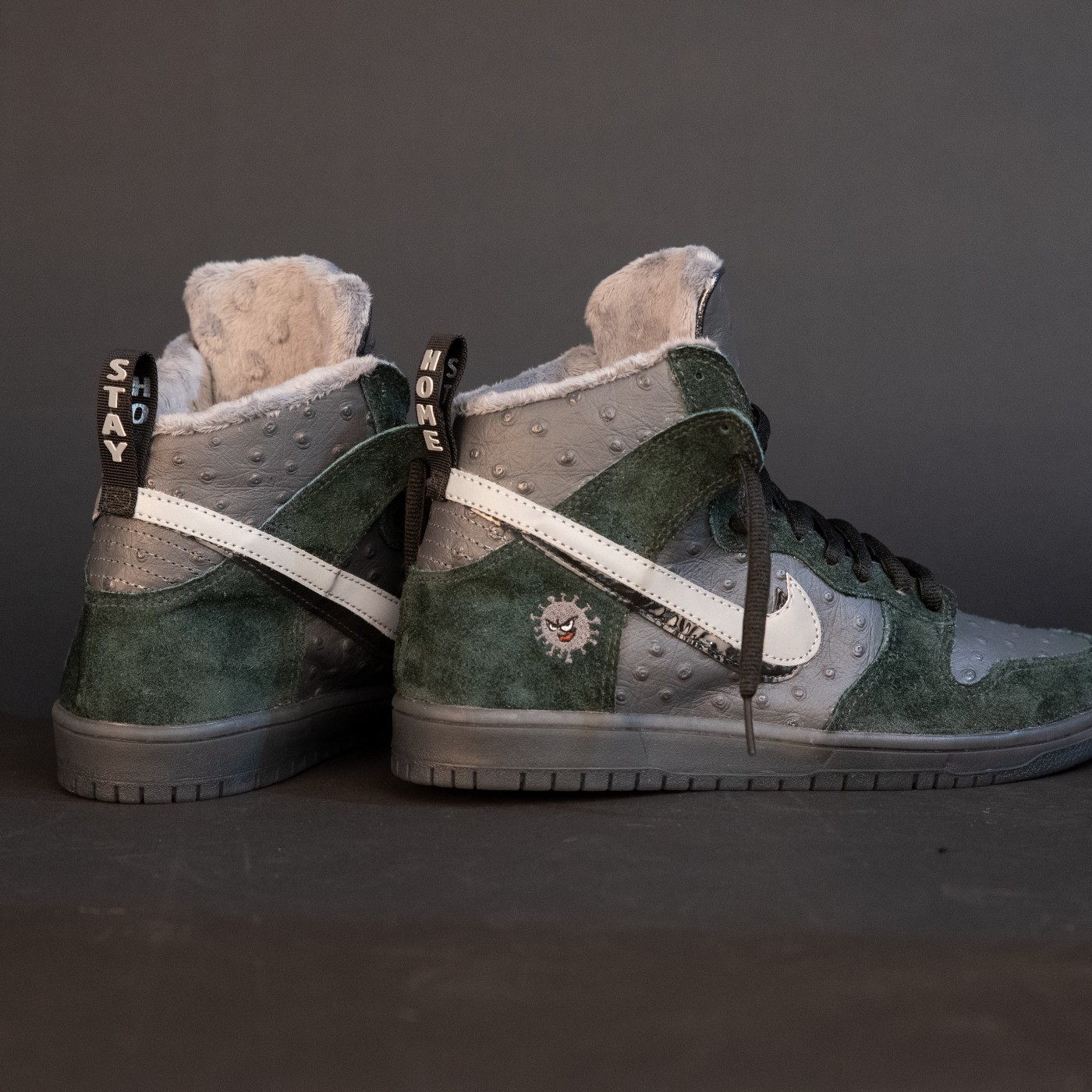
What’s your design background, what’d you get a degree in?
I dropped out of college. I was a physics major who thought he was gonna specialize in thermodynamics and test intake manifolds for Honda. But I dropped out of school and followed the wind instead of the road, and that’s why I’m where I’m at right now.
So do you have any formal training?
As a designer, I trained with Cooper Design and did formal UX training years ago, but as far as my actual hard design skills, I lived with a bunch of starving artists in a starving artist house in LA when we were in our early 20s. A few of those guys went to ArtCenter and few of those guys dropped out of ArtCenter, but all of those guys are now superstars. So I think my background in design is growing up in Southern California in the action sports world and that just kind of being a part of the life that you live here.
What advice do you have for people who aren’t sure if they should pursue their weirdest ideas, or are wondering how they should start doing that?
The number one thing I always say — to put it in terms of shoes — is make a shoe, knowing it’s not gonna be very good. Try hard, though, and pay attention. Put actual effort into it. Pay attention to what went well and what didn’t. Then just keep making another shoe with the lessons applied from the last one to the new one. And literally repeat forever. Eventually, you’re gonna be good at it. It’s just as simple as that.



